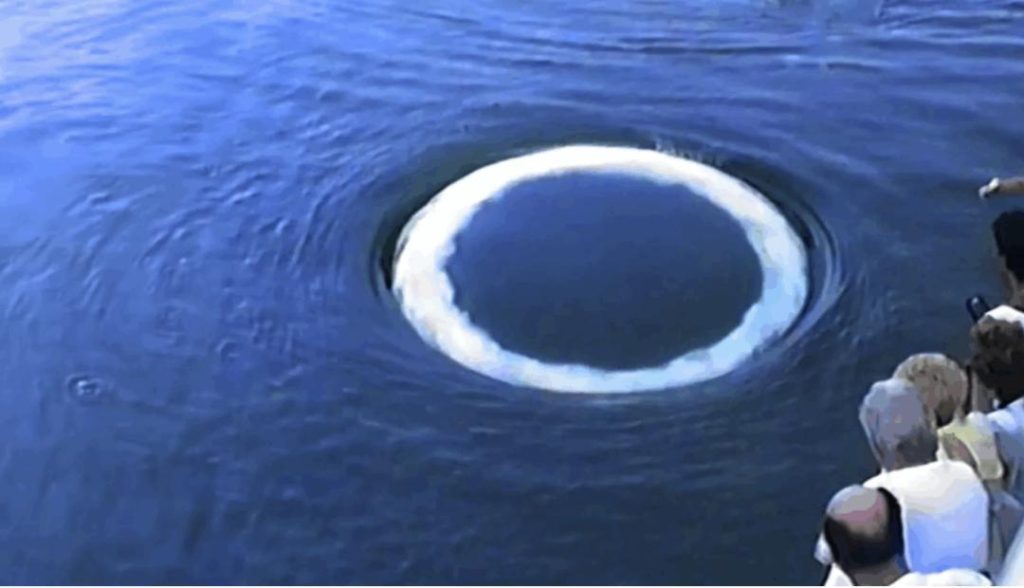
Are Humpback Whales Trying to Chat with Humans? SETI Thinks So
Imagine being on a boat, surrounded by the vast expanse of the ocean, when suddenly, you notice a peculiar sight: a humpback whale is creating intricate patterns of air bubbles near your vessel. At first, you might think it’s just a playful behavior, but what if I told you that scientists believe this behavior could be more than just a form of self-expression? What if humpback whales are, in fact, trying to communicate with humans?
The Search for Extraterrestrial Intelligence (SETI) has long been focused on detecting signs of intelligent life beyond our planet. However, a recent study suggests that we might not need to look too far to find evidence of non-human intelligence. Researchers at SETI have been monitoring humpback whales’ behavior and have discovered a pattern of deliberate bubble-ring creation that may be a form of communication.
Bubble-rings, as they’re called, were previously thought to be an adaptation for feeding or mating, but SETI researchers have documented 39 incidents of humpback whales creating these patterns near boats. The behavior is not only intentional but also appears to be playful and directed towards humans. This raises questions about the possibility of humpback whales trying to communicate with us.
To understand the significance of this discovery, let’s take a step back and consider the context. Humpback whales are known for their complex vocalizations, which include a wide range of sounds, from low rumbles to high-pitched clicks. These vocalizations are thought to be used for mating, feeding, and social interactions within their pods. However, the creation of bubble-rings seems to be a unique behavior that is distinct from these other forms of communication.
The SETI researchers believe that the bubble-rings may be a form of visual communication, allowing the whales to convey information to humans. This is a groundbreaking idea, as it challenges our current understanding of animal intelligence and the possibility of non-human communication.
So, what might humpback whales be trying to communicate? The researchers are still studying the data, but some possible explanations include:
- Social bonding: Humpback whales may be using bubble-rings to strengthen social bonds within their pods or even with humans.
- Mating signals: The bubbles could be a way for humpback whales to signal their interest in mating or to attract potential mates.
- Warning signals: The whales may be creating bubble-rings to alert other humpback whales to potential threats, such as boats or predators.
- Curiosity: It’s possible that the whales are simply curious about humans and are trying to initiate communication.
While we can’t know for certain what the humpback whales are trying to convey, the fact that they are creating these patterns deliberately and near boats suggests a level of intentionality that is unprecedented in animal behavior.
This discovery has significant implications for our understanding of non-human intelligence and the possibility of extraterrestrial life. If humpback whales are capable of complex communication with humans, it raises the question of whether other animals, or even extraterrestrial beings, might be similarly capable.
As we continue to study the behavior of humpback whales, we may uncover new insights into their cognitive abilities and their capacity for communication. This could lead to a reevaluation of our understanding of the animal kingdom and our place within it.
Moreover, the discovery of humpback whales’ communication skills could have practical applications in fields such as marine conservation and environmental monitoring. If we can develop a means of communicating with humpback whales, we may be able to better understand and respond to their needs, ultimately leading to more effective conservation efforts.
In conclusion, the discovery of humpback whales’ bubble-ring creation is a groundbreaking finding that challenges our current understanding of animal intelligence and the possibility of non-human communication. As we continue to study this phenomenon, we may uncover new insights into the cognitive abilities of humpback whales and their capacity for communication.
The SETI researchers’ findings have significant implications for our understanding of the universe and our place within it. If humpback whales are capable of complex communication with humans, it raises the question of whether other animals, or even extraterrestrial beings, might be similarly capable.
As we venture further into the unknown, we may find that the boundaries between species are not as clear-cut as we once thought. The discovery of humpback whales’ communication skills is a reminder that the universe is full of mysteries waiting to be unraveled, and that even the most unexpected discoveries can lead to profound breakthroughs in our understanding of the cosmos.






